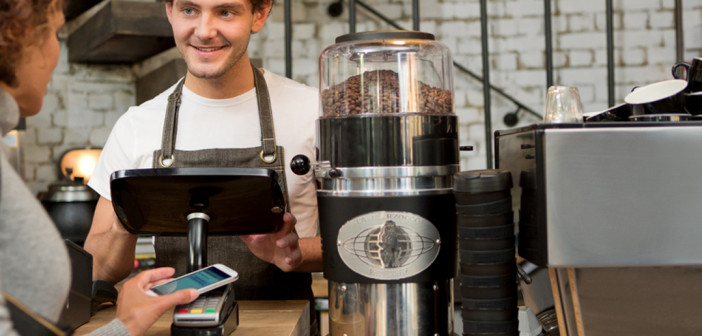Consumers embrace £30 limit as higher value spend drives new contactless behaviour across the UK
The increase in the contactless card payment limit six months ago has had a transformative effect on consumer spending habits in the UK, according to new analysis from Visa Europe.
The limit was increased from £20 to £30 in September 2015 and has generated significant growth of certain purchases within the new limit, such as at service stations, supermarkets and restaurants, and in contactless payments overall, which rose by 237% compared to the same period year on year.
The analysis, which follows Visa’s new ‘Cashfree and Proud’ campaign¹, reveals that contactless transactions over £20 saw an average monthly growth rate of 19.1% between October 2015 and March 2016. This is over twice the average monthly growth rate of 8% for contactless transactions under £20 over the same period, highlighting consumer appetite to use the technology for more expensive purchases. In total, contactless usage between £20 and £30 now account for more than 10% of all face-to-face card transactions within that spending band.
Kevin Jenkins, managing director UK and Ireland, Visa Europe said that mobile technology is part of the reason for contactless acceptance: “Overall, we have seen 36 million contactless transactions over £20 in the first six months; which amounts to nearly £900 million of transactions made easily and safely, in less time, freeing consumers from the need to carry cash. While the number of transactions continues to grow, we are already seeing the next generation payment technology arrive, with mobile and wearable payment services bedding in. Where the convenience and safety of making a contactless payment is available, consumers are eager to be cash free and proud.”
He added: “The trajectory for contactless payments continues to look very strong. Increasing the spending limit to £30 has clearly encouraged consumer adoption and retailer opportunity across Britain; families are now able to do their weekly supermarket shop and pay contactless; the increase has driven a demonstrable shift in consumer behaviour. “
The shift in consumer payment behaviour has most clearly been felt in four categories, where the ability to tap and go has accelerated rapidly. In supermarkets, where the average supermarket basket is £25, the data shows a 100% increase in contactless transactions compared to the six months before the £30 limit was introduced. Restaurants have enjoyed a similar boost as a meal for two has come more into range when paying this way; spend there has risen 155%.
Similarly, consumers have turned to contactless when filling up their cars at service stations. The average contactless transaction at the pump has increased by £2.22 since the £30 limit began, rising from £8.47 to £10.69. With petrol prices hovering around the 104 pence a litre mark, that means consumers can buy nearly 29 litres of petrol on contactless, enough to drive from London to Cardiff and back.
Finally, bars and pubs have seen a surge in contactless transactions in the £20 to £30 band. Average weekly growth in these transactions was 30% between October 2015 and March 2016. This compares to growth of only 3% for contactless purchases under £20, suggesting larger rounds or more expensive bottles of wine are now being bought via tap and go.





